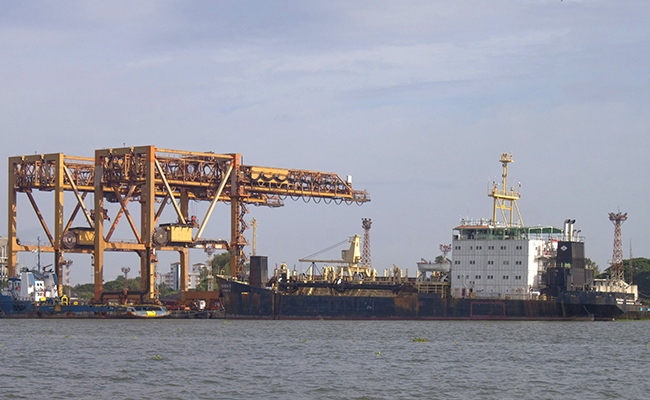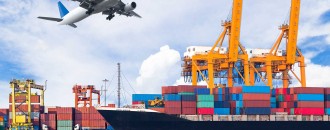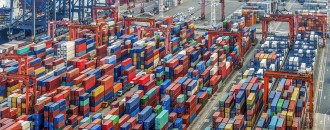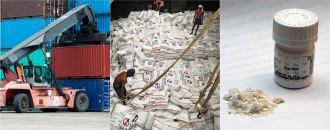
Outlook for Adani Ports and Special Economic Zone ‘Stable’: Report
Jayarama Emani | The Dollar Business  Three top French banks might have refused to fund Adani groups' mega coal project in Australia's Galilee Basin near the fragile Great Barrier Reef, but the outlook for the group’s Adani Ports and Special Economic Zone Ltd (APSEZL) has been declared ‘Stable,’ by the India Ratings & Research (Ind-Ra) agency. The agency has taken a consolidated view of APSEZL and its subsidiaries. The rating is driven by APSEZL’s strong business profile which is likely to translate into a steady improvement of its financial profile in the next three years. Justifying the rating, Ind-Ra said that APSEZL is by far the largest private sector port developer in the country with a total capacity of 335 million tons per annum (mtpa) comprising bulk capacity of 175 mtpa, crude oil handling capacity of 50mtpa and container handling capacity of 110 mtpa (corresponding to 5.5 million twenty-foot equivalent units (TEUs)). The capacity is spread over seven ports - Mundra, Hazira Kandla and Mormugao on the west coast, and Dhamra, Vizag and Ennore on the east coast. The company’s diversified geographic presence de-risks revenue from the dependence on a particular region or cargo type. APSEZL has entered into long-term contracts (extending up to the concession period) with clients, which also provide revenue stability. Notable among its large clients are Indian Oil Corp. Ltd (‘IND AAA’/Stable), Hindustan Petrochemical Corp Ltd, HPCL Mittal Energy Ltd and Suzuki Motor Co. Moreover, Mundra port, APSEZL’s revenue driver, benefits from the marine traffic diverted from the congested Jawaharlal Nehru Port Trust (JNPT)/Mumbai ports where the turnaround time is higher. Another advantage that Mundra has over JNPT is that it is has a much higher draft (around 17m-20m) while JNPT is essentially a tidal port due to shallow draft. Also, the port’s infrastructure not only allows the largest capacity vessels to berth (such as capsize dry bulk carriers and very large crude carriers), but also facilitates the fast unloading and evacuation of cargo thereby minimising the turnaround time, the report added. The other port at Dhamra, benefits from its strategic location close to the resource-rich Eastern hinterland with rail and road connectivity, proximity to the golden quadrilateral and the adequate draft which allows for berthing of capsize vessels. APSEZL, therefore, believes it will be viable to increase capacity to 100mtpa over the long-term from 24mtpa. This will be achieved by upgrading infrastructure which will also provide shipping companies a better alternative to the other congested Eastern ports. This port allows the Adani group access the steel industries and power plants located in the Eastern hinterland, and is therefore likely to play an important role in the group’s strategy of being India’s largest energy logistics player, the report concluded.
Three top French banks might have refused to fund Adani groups' mega coal project in Australia's Galilee Basin near the fragile Great Barrier Reef, but the outlook for the group’s Adani Ports and Special Economic Zone Ltd (APSEZL) has been declared ‘Stable,’ by the India Ratings & Research (Ind-Ra) agency. The agency has taken a consolidated view of APSEZL and its subsidiaries. The rating is driven by APSEZL’s strong business profile which is likely to translate into a steady improvement of its financial profile in the next three years. Justifying the rating, Ind-Ra said that APSEZL is by far the largest private sector port developer in the country with a total capacity of 335 million tons per annum (mtpa) comprising bulk capacity of 175 mtpa, crude oil handling capacity of 50mtpa and container handling capacity of 110 mtpa (corresponding to 5.5 million twenty-foot equivalent units (TEUs)). The capacity is spread over seven ports - Mundra, Hazira Kandla and Mormugao on the west coast, and Dhamra, Vizag and Ennore on the east coast. The company’s diversified geographic presence de-risks revenue from the dependence on a particular region or cargo type. APSEZL has entered into long-term contracts (extending up to the concession period) with clients, which also provide revenue stability. Notable among its large clients are Indian Oil Corp. Ltd (‘IND AAA’/Stable), Hindustan Petrochemical Corp Ltd, HPCL Mittal Energy Ltd and Suzuki Motor Co. Moreover, Mundra port, APSEZL’s revenue driver, benefits from the marine traffic diverted from the congested Jawaharlal Nehru Port Trust (JNPT)/Mumbai ports where the turnaround time is higher. Another advantage that Mundra has over JNPT is that it is has a much higher draft (around 17m-20m) while JNPT is essentially a tidal port due to shallow draft. Also, the port’s infrastructure not only allows the largest capacity vessels to berth (such as capsize dry bulk carriers and very large crude carriers), but also facilitates the fast unloading and evacuation of cargo thereby minimising the turnaround time, the report added. The other port at Dhamra, benefits from its strategic location close to the resource-rich Eastern hinterland with rail and road connectivity, proximity to the golden quadrilateral and the adequate draft which allows for berthing of capsize vessels. APSEZL, therefore, believes it will be viable to increase capacity to 100mtpa over the long-term from 24mtpa. This will be achieved by upgrading infrastructure which will also provide shipping companies a better alternative to the other congested Eastern ports. This port allows the Adani group access the steel industries and power plants located in the Eastern hinterland, and is therefore likely to play an important role in the group’s strategy of being India’s largest energy logistics player, the report concluded.
This article was published on April 10, 2015.





 to success.
to success.